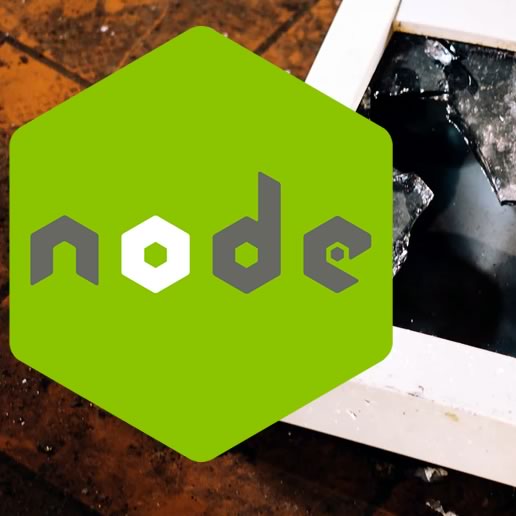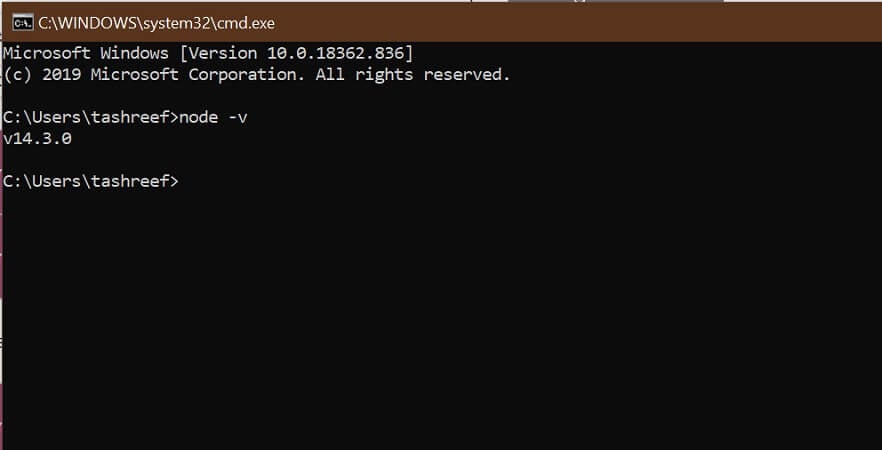

So, what do you do when you want to uninstall Node.js? This could be from a package manager, from the source code, or from a pre-compiled binary distribution.
 #101: npm Origins and Node.If you read one of my earlier posts on how to install Node.js, you probably noticed there are quite a few ways to install it on your computer. #113: Keep npm Running with Isaac Schlueter and Charlie Robbins. #116: Node Black Friday at Walmart with Eran Hammer.
#101: npm Origins and Node.If you read one of my earlier posts on how to install Node.js, you probably noticed there are quite a few ways to install it on your computer. #113: Keep npm Running with Isaac Schlueter and Charlie Robbins. #116: Node Black Friday at Walmart with Eran Hammer.  #119: MEAN.js & Full-Stack JavaScript with Roie Cohen and Amos Haviv. #139: The Rise of io.js with Mikeal Rogers. #155: The Future of Node.js with Scott Hammond. #178: OAuth 2.0, Oz, Node.js, and Hapi.js with Eran Hammer. #200: JavaScript and Robots with Raquel Vélez, a.k.a. #223: Homebrew and Package Management with Mike McQuaid. Since you’re interested in Node.js, npm, and Homebrew - listen to some recent related podcasts we’ve done on those subjects. Listen to related podcasts on The Changelog If not - retrace your steps or post a question to Stack Overflow. If that worked then congratulations - you’ve installed Node.js, npm, and Grunt. To test out your Node and npm install, try installing Grunt (you might be asked to run with sudo): npm install -g grunt-cli Next, install Node (npm will be installed with Node): brew install node Next, add Homebrew’s location to your $PATH in your. Run the command below and follow any recommendations from brew doctor. brew updateĪs a safe measure you should run brew doctor to make sure your system is ready to brew. Then run brew update to make sure Homebrew is up to date. Install Node.js and npm with Homebrewįirst, install Homebrew.
#119: MEAN.js & Full-Stack JavaScript with Roie Cohen and Amos Haviv. #139: The Rise of io.js with Mikeal Rogers. #155: The Future of Node.js with Scott Hammond. #178: OAuth 2.0, Oz, Node.js, and Hapi.js with Eran Hammer. #200: JavaScript and Robots with Raquel Vélez, a.k.a. #223: Homebrew and Package Management with Mike McQuaid. Since you’re interested in Node.js, npm, and Homebrew - listen to some recent related podcasts we’ve done on those subjects. Listen to related podcasts on The Changelog If not - retrace your steps or post a question to Stack Overflow. If that worked then congratulations - you’ve installed Node.js, npm, and Grunt. To test out your Node and npm install, try installing Grunt (you might be asked to run with sudo): npm install -g grunt-cli Next, install Node (npm will be installed with Node): brew install node Next, add Homebrew’s location to your $PATH in your. Run the command below and follow any recommendations from brew doctor. brew updateĪs a safe measure you should run brew doctor to make sure your system is ready to brew. Then run brew update to make sure Homebrew is up to date. Install Node.js and npm with Homebrewįirst, install Homebrew. 
However, if you’re a Homebrew fan like me and prefer to install all of your packages with it - ensuring your packages are installed using the same commands and directories and allowing Homebrew to easily manage upgrades and updates - then this guide will help you get started. The default method for installing Node.js is to download a pre-built installer for your platform, install it and make sure it’s on your $PATH. If you’re looking for an easy guide to install Node.js and npm on OS X and macOS - this is it.īefore we get started, are you listening to JS Party? If not, you should be! Maybe start with our episode all about best practices for Node developers.








 0 kommentar(er)
0 kommentar(er)
